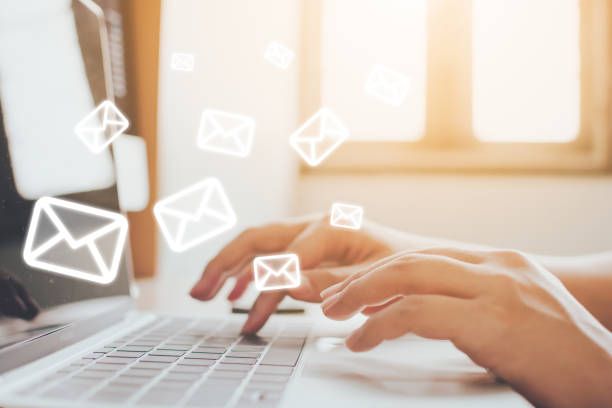Email communication has become an integral part of our personal and professional lives. However, in the ever-evolving digital landscape, ensuring the delivery of your emails can be challenging. One of the key factors that can affect the success of your email campaigns is email bounce. In this comprehensive guide, we will delve into the world of email bounce verification, its importance, best practices, and how it can enhance your email deliverability.
The Importance of Email Bounce Verification

Email bounce occurs when an email fails to reach its intended recipient's inbox and is returned to the sender. There are two types of email bounces: hard bounces and soft bounces. Hard bounces are permanent failures that occur when an email is sent to an invalid or non-existent address, while soft bounces are temporary failures caused by issues like a full inbox or a server problem.
Now, you might wonder why email bounce verification is crucial. Well, here are a few reasons:
- Improved Email Deliverability: By identifying and removing invalid or non-existent email addresses from your mailing list, you can significantly enhance your email deliverability rates. This ensures that your messages reach the right audience and increases the chances of engagement.
- Protecting Your Sender Reputation: High bounce rates can negatively impact your sender reputation. Email service providers monitor bounce rates as a measure of sender credibility. Regularly verifying your email list helps maintain a healthy sender reputation, reducing the risk of your emails being marked as spam or blocked.
- Cost and Time Savings: Sending emails to non-existent or invalid addresses is a waste of resources. By validating your email list, you can save costs associated with sending emails to unresponsive recipients and focus your efforts on genuine leads.
- Enhanced Marketing Campaign Performance: Validating your email list ensures that your marketing campaigns are targeting an engaged and responsive audience. This improves campaign performance metrics such as open rates, click-through rates, and conversions.

Best Practices for Email Bounce Verification
Now that you understand the importance of email bounce verification, let's explore some best practices to implement in your email marketing strategy:

- Use a Reliable Email Bounce Verification Service: Partnering with a reputable email verification service, such as NeverBounce, ZeroBounce, or others, can simplify the process and ensure accurate results. These services use advanced algorithms to detect invalid and risky email addresses, helping you maintain a high-quality email list.
- Regularly Cleanse and Update Your Email List: Over time, email addresses can become invalid or inactive. Regularly cleanse your email list by removing addresses that have hard bounced or shown no activity for an extended period. Keeping your list up to date maximizes your chances of reaching engaged recipients.
- Implement Double Opt-In: Using a double opt-in process adds an extra layer of verification to your email list. After a user signs up, they receive a confirmation email and must click a link to verify their subscription. This reduces the chances of fake or mistyped email addresses entering your list.
- Monitor and Analyze Bounce Rates: Keep a close eye on your bounce rates and analyze the data to identify any patterns or trends. This can help you identify potential issues, such as problems with specific email providers or segments of your list, allowing you to take proactive measures to rectify them.
- Segment Your Email List: Segmenting your email list based on various criteria, such as demographics, past interactions, or engagement levels, allows you to tailor your messages and offers to specific audiences. This improves relevance and reduces the likelihood of high bounce rates.
Frequently Asked Questions about Email Bounce Verification
Here are answers to some commonly asked questions about email bounce verification:
Q: How does email bounce verification work?
Email bounce verification services use a combination of techniques and algorithms to validate the deliverability of an email address. They check if the address is syntactically correct, active, and not associated with any known email service provider blacklists. These services also detect role-based emails, temporary or disposable addresses, and other potential risks.
Q: How often should I verify my email list?
The frequency of email list verification depends on the size and activity level of your list. It's recommended to validate your list at least once every three to six months. However, if you have a large list or frequently add new subscribers, more frequent verification can help maintain list quality.
Q: Can email bounce verification remove all bounces?
Email bounce verification can significantly reduce bounce rates by identifying invalid or risky email addresses. However, it cannot eliminate all bounces entirely. Soft bounces, which are temporary failures, may still occur due to factors beyond the verification process, such as full inboxes or temporary server issues.
Q: Can I verify an email address before sending an email?
Yes, most email verification services offer real-time API integrations that allow you to verify an email address before sending an email. This helps prevent bounces and ensures that your messages reach valid and active recipients.
Q: Can email bounce verification help with spam filtering?
Email bounce verification primarily focuses on validating email addresses for deliverability
Email bounce verification primarily focuses on validating email addresses for deliverability. While it indirectly helps improve spam filtering by reducing bounce rates and maintaining a good sender reputation, it does not directly handle spam filtering. Implementing other email security measures, such as spam filters and content analysis, is crucial for effective spam prevention.
In conclusion, email bounce verification plays a vital role in enhancing email deliverability, protecting your sender reputation, and improving marketing campaign performance. By implementing best practices and partnering with reliable email verification services, you can maintain a high-quality email list, engage with your audience effectively, and achieve better results from your email marketing efforts.

